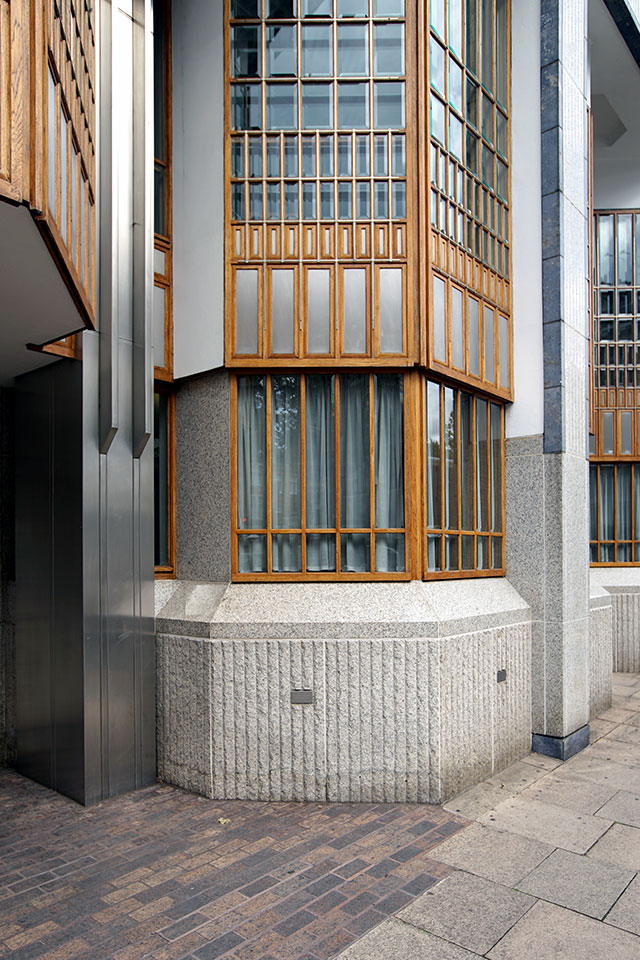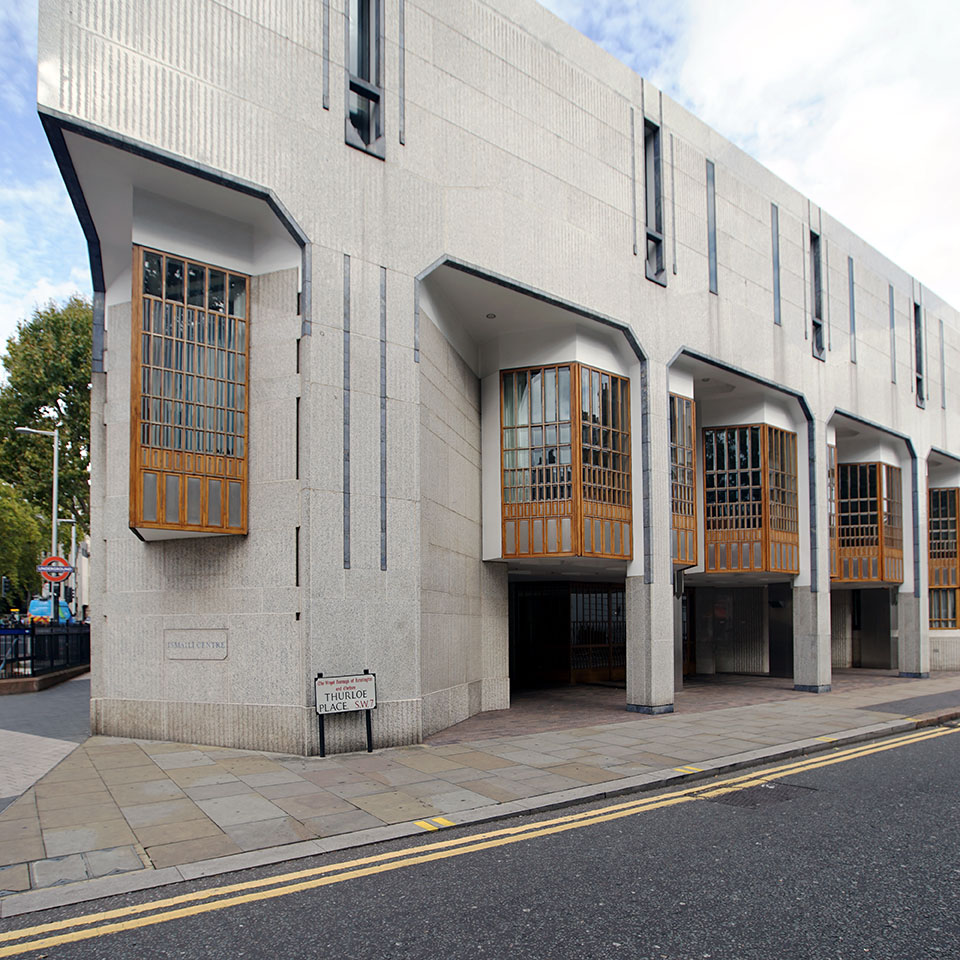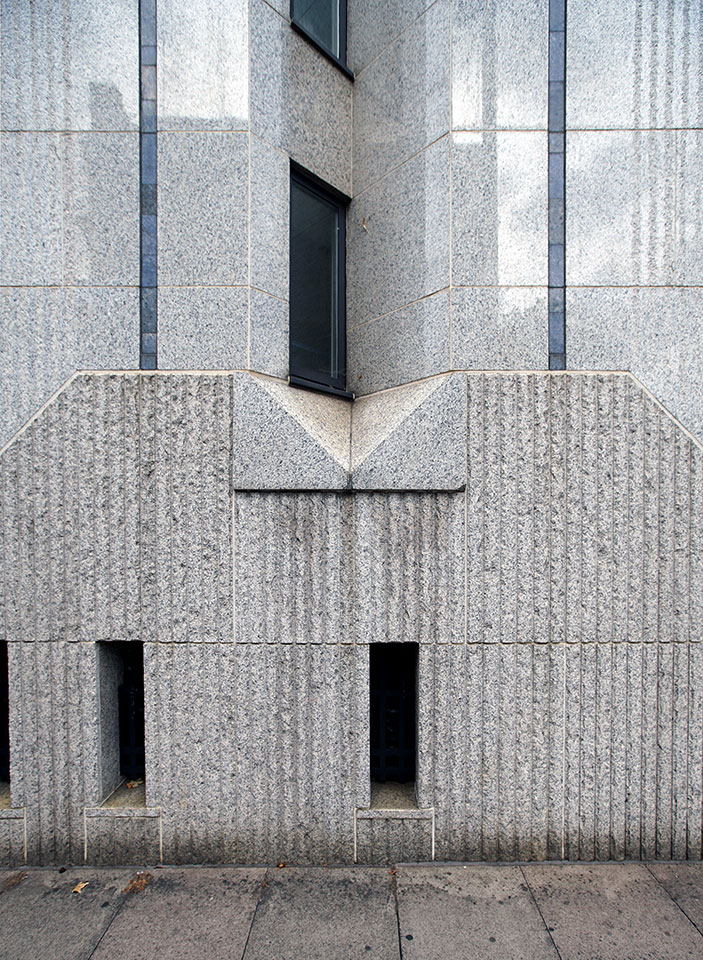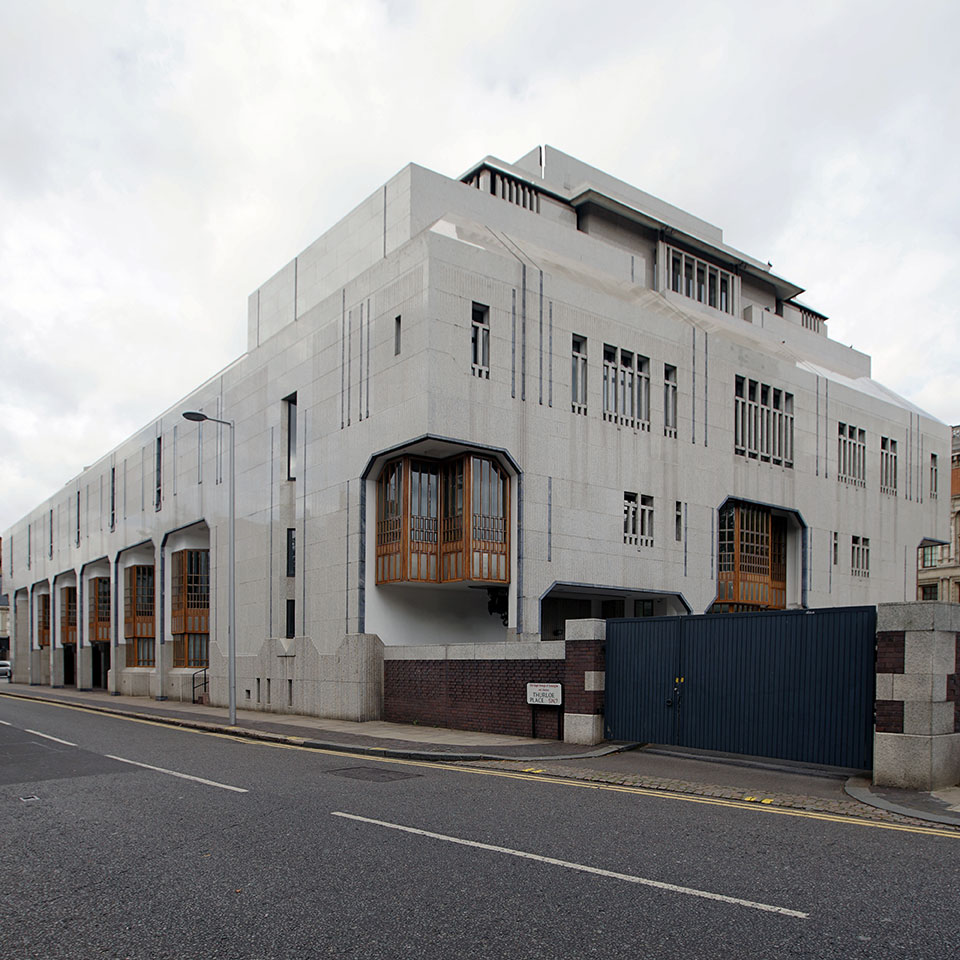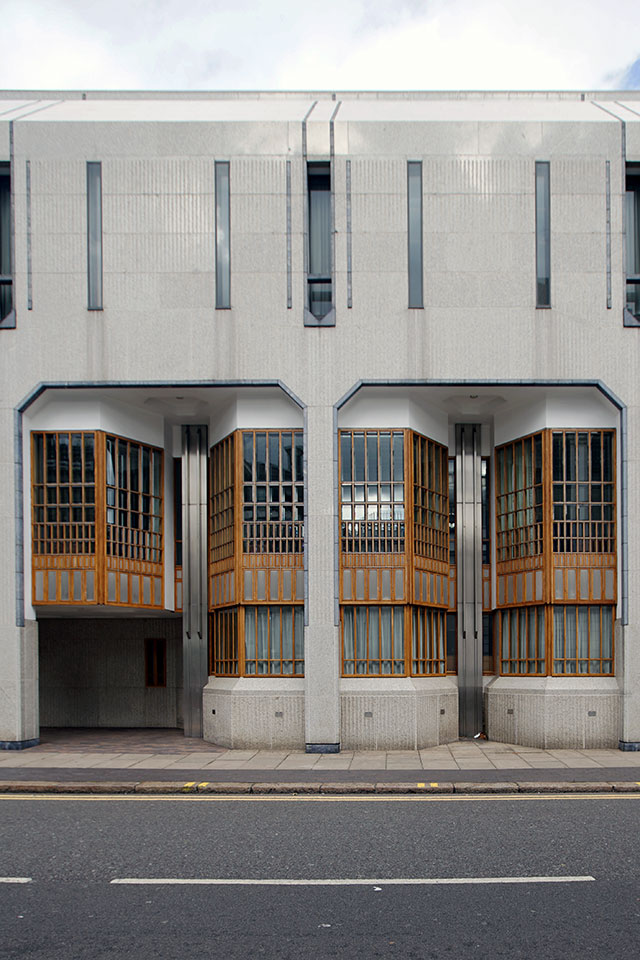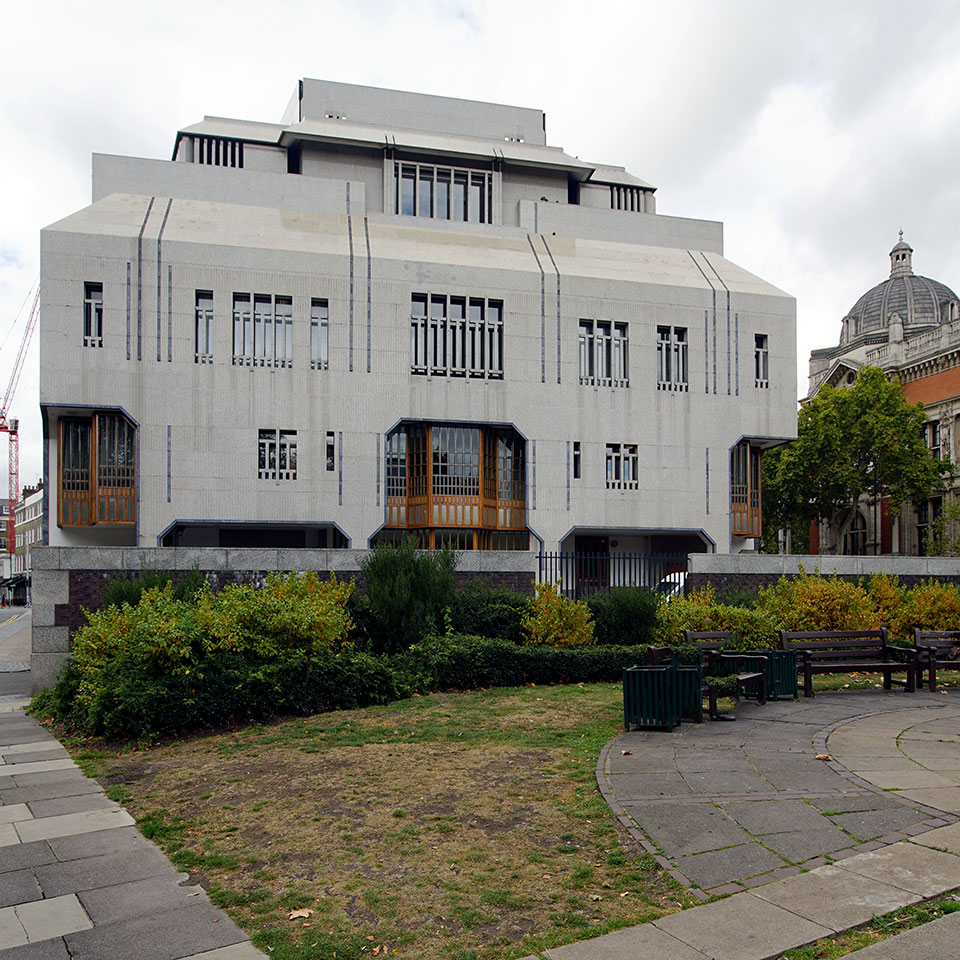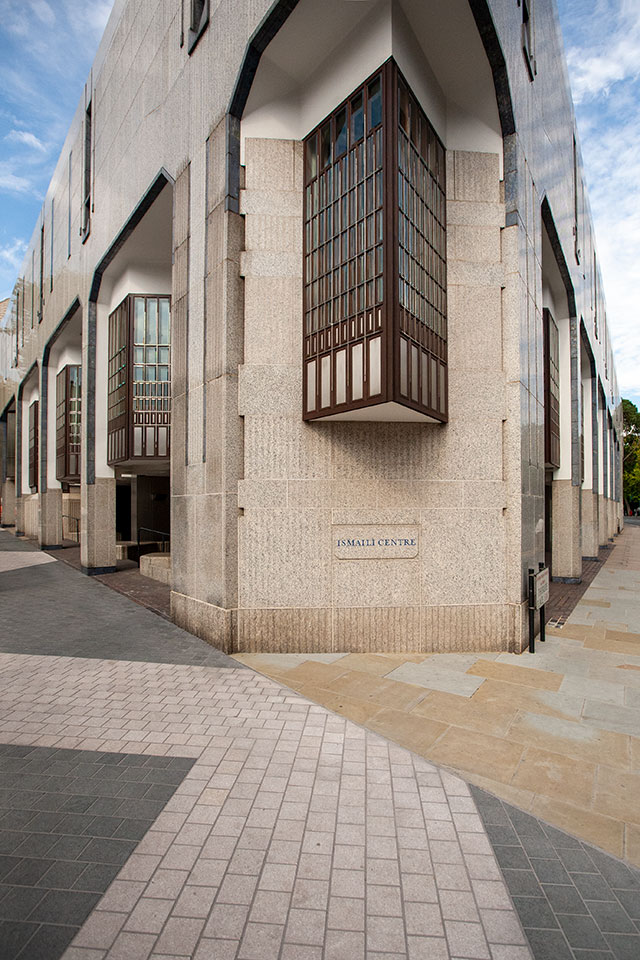Ismaili Centre
1985
This is a remarkably fine building that has aged magnificently. It is impossible not to marvel at the quality of its materials and finishes. My first encounter was one of bewilderment as to its function, it has the air of an embassy, clearly culturally orientated but mildly introverted and politely defensive. Built on a site between Cromwell Road and Thurloe Place, facing the Victoria and Albert Museum that was originally intended for the National Theatre, the GLC chose the scheme promoted by the Aga Khan Foundation as their preferred development in 1978. It did not officially open until 1985. The British architectural press of the period did not warm to the building, even articles that were positive referred to its ‘strangeness’ and were unable to resist the Islamic vs Western trope when attempting to contextualise its design (as explored by Shahed Saleem in a Building of the Month article for the C20 Society) [1]. The Aga Khan, spiritual and political leader of the Ismailis, had a profound influence on architecture through the establishment of an international prize, the Aga Khan Award for Architecture, in 1977. Hugh Casson joined an assembled team of academics, historians and architects to help define the nature of the Award. The prize is made triennially to projects that improve the quality of life and the architect is viewed as one actor in the collective endeavour of construction. This apparent diminution of the authority of the architect was embraced by Casson and Conder, Neville Conder was reported to have ‘felt his way with the client’ [2] (Hugh Casson is not recorded as having been involved with the design, Conder worked with partner Kenneth Price on the scheme). The planning was described as ‘functional’, which belies a deft handling of the converging alignment of two streets in combination with an array of 45-degree chamfered forms. The social hall on the first floor is lit by the jewelled light of the bevelled, graduating panes of glass set into projecting teak structures. Above, the prayer hall for 1200 people dominates the second floor and the inset third floor opens to a rooftop courtyard garden designed by Sasaki Associates [3]. Despite the contemporary assertions of its unique qualities, this building comfortably sits within the formal and material oeuvre of the practice and should be considered alongside the elephant house at London Zoo, the banking HQ in Manchester, Derby’s Assembly Hall and Millfield School in Somerset.
[1] https://c20society.org.uk/building-of-the-month/the-ismaili-centre-london; Pawley, M., ‘Cross-Cultural Centre’, Architects’ Journal, 30 November 1983, p.32
[2] Ibid. p.35
[3] Landscape International, Vol. 3, No. 1, 1984 Jan/Feb, pp.14-17
